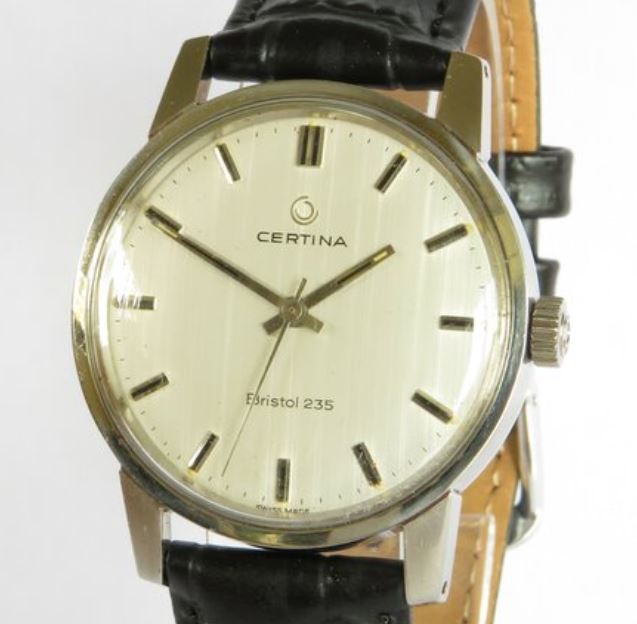Last Updated on April 10, 2024 by Jason
Certina vintage watches are popular and well-respected amongst vintage watch collectors. Certina S.A. was founded in 1888 when Adolf and Alfred Kurth opened their first movement and supplies factory for the watchmaking industry in Grenchen, Switzerland. Initially, the brothers traded as Kurth Freres. Their staff consisted of three employees working in a workshop annexed to the Kurth family home. The company produced watch components and ebauches.
In 1906 the Kurth brothers produced their first complete watch using the brand name “Grana”, short for “Granacus”, the Latin name of Grenchen. The Grana watch was an immediate success and was well-received by the public. In the 1920s, Alfred Kurth’s sons Erwin and Hans joined the company and managed it through the difficulties of the Great Depression.
In 1924, Kurth Freres SA registered the trade mark “Certina”, which is the Latin word for “Certain”. However, it would be several years before they would begin selling watches under this brand. The earliest vintage watches I could find online with the Certina brand on the label dated to the early 1930s. In 1926, Keurth Freres SA registered the trade mark “Grana” even though they had already been selling using that brand for 20 years. This wasn’t unusual at the time.
Dirty Dozen
Kurth Freres SA continued to sell Grana branded watches into the 1940s, most notably as one of the Dirty Dozen military watches. The term “Dirty Dozen” refers to a group of 12 different models of military-issued wristwatches produced during World War II. These watches were commissioned by the British Ministry of Defense and were intended for use by soldiers during the war. The specifications for these watches were quite stringent, requiring durability, accuracy, and reliability in various combat conditions.
The case backs on all of the Dirty Dozen watches were stamped with “W.W.W.”, initials that denoted them as “Watch, Wrist, Waterproof” and the Broad Arrow emblem or pheon that was used to denote the property of the U.K. government. The twelve Swiss companies chosen to supply these watches were: Buren, Cyma, Eterna, Grana, Jaeger-LeCoultre, Lemania, Longines, IWC, Omega, Record, Timor, and Vertex. Authentic Dirty Dozen watches can command high prices in the vintage watch market. Grana’s model is the rarest and for collectors of vintage military watches, it is the Holy Grail. It is unknown how many were produced, but the number is likely to be fewer than 5,000 and maybe as few as 1,000. The Grana bland disappeared from the market soon after World War II ended.
Certina
The Grana bland disappeared from the market soon after World War II ended and the Kurth Freres SA company turned its focus to the Certina brand. In 1947, Certina produced its first self-winding movement, the hammer-winding KF 360. The ‘hammer’ movement used a pivoted ‘hammer’ that moved through an arc of 270° hitting buffer springs at both ends. In 1951, Certina refined the automatic movement to include a rotor mechanism, much like automatic watches today.
At the end of the 1950s, the demand for flatter wristwatches was increasing. Certina developed the 25-65 or 25-651/652 (with date/day and date) movements. These were launched in 1960, and were 1mm slimmer than the previous Certina movements. The 25-651 is the most prevalent Certina movement which was used in numerous models and was often combined with the DS feature. Other notable Certina models during the 1950s and 60s were the Bristol 235, the Waterking and the Blue Ribbon. All remain popular with vintage watch collectors.
DS Concept
In 1959 Certina introduced the DS concept to its range of watches. The “DS” stands for “Double Security”. This concept was to provide increased shock resistance, water resistance, and an extra-strong case construction. This made Certina DS watches highly durable and reliable. This was achieved by floating the mounting of the entire movement on an elastic shock absorber ring. This was in addition to the conventional shock absorber (Incabloc). In addition, there was a gap between the dial and the case, allowing the movement to move in all directions. Other features were added including improved sealing, an extra thick Plexiglass crystal, combined with a reinforced case back.
On 13 May 1960 a Swiss team, under the leadership of Max Eiselin, became the first to reach the summit of Dhaulagiri I (8167m) the world’s seventh-highest mountain. The team were equipped with Certina DS automatic watches. In the early 1960s, the Certina DS also took part in the US Navy’s Sealab II underwater project. Sealab II was an experimental underwater habitat designed for human occupation and research conducted by the United States Navy. It involved scientists and divers working and living in a diving station. They confirmed that the Certina DS was absolutely reliable under all conditions. In 1976 the brand partnered with Muhammad Ali who was chosen as an ambassador for the brand. The American heavyweight champion was seen wearing a tungsten carbide Certina DS Diamaster.
Related content
The History of Certina Watches at First Class Watches.
